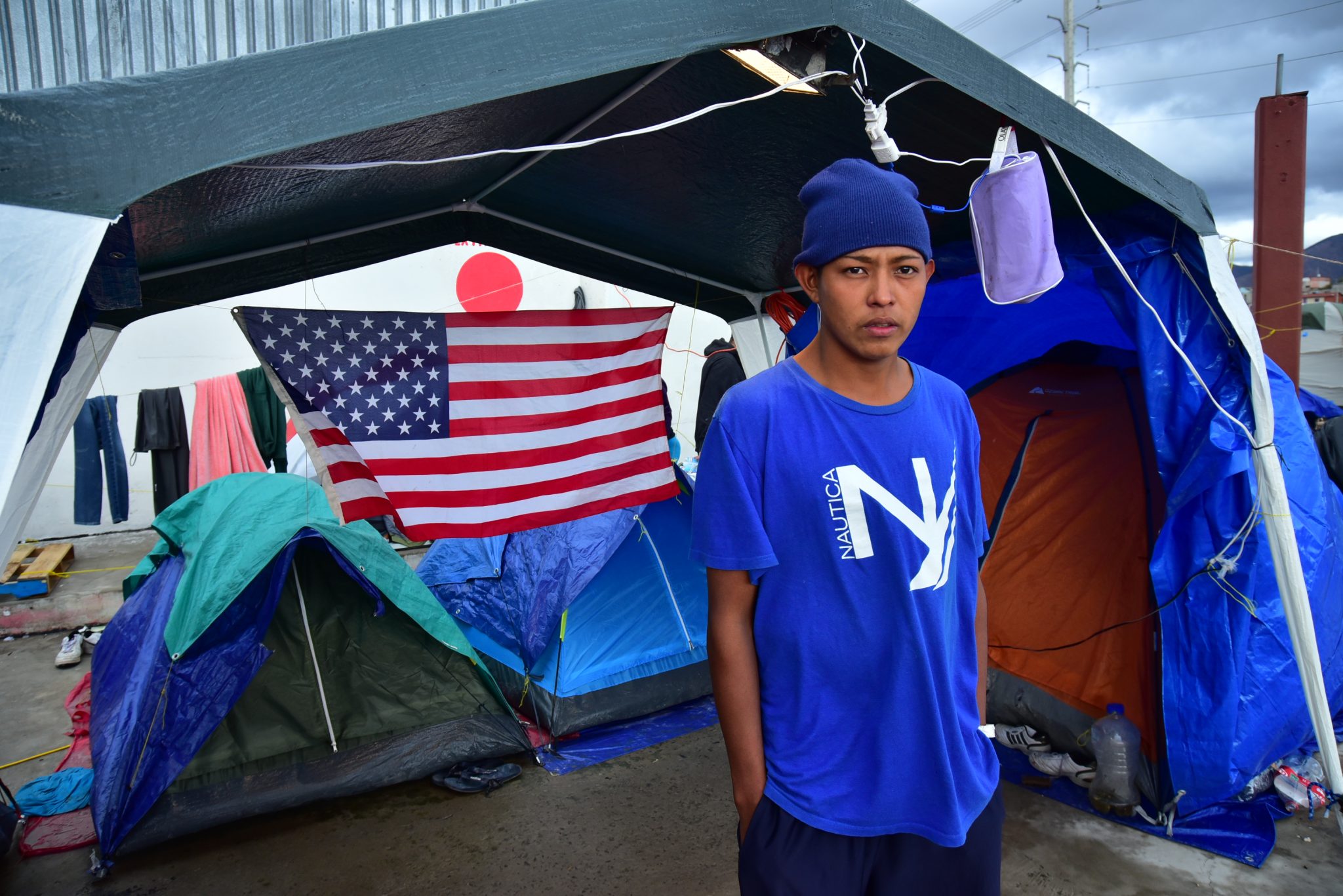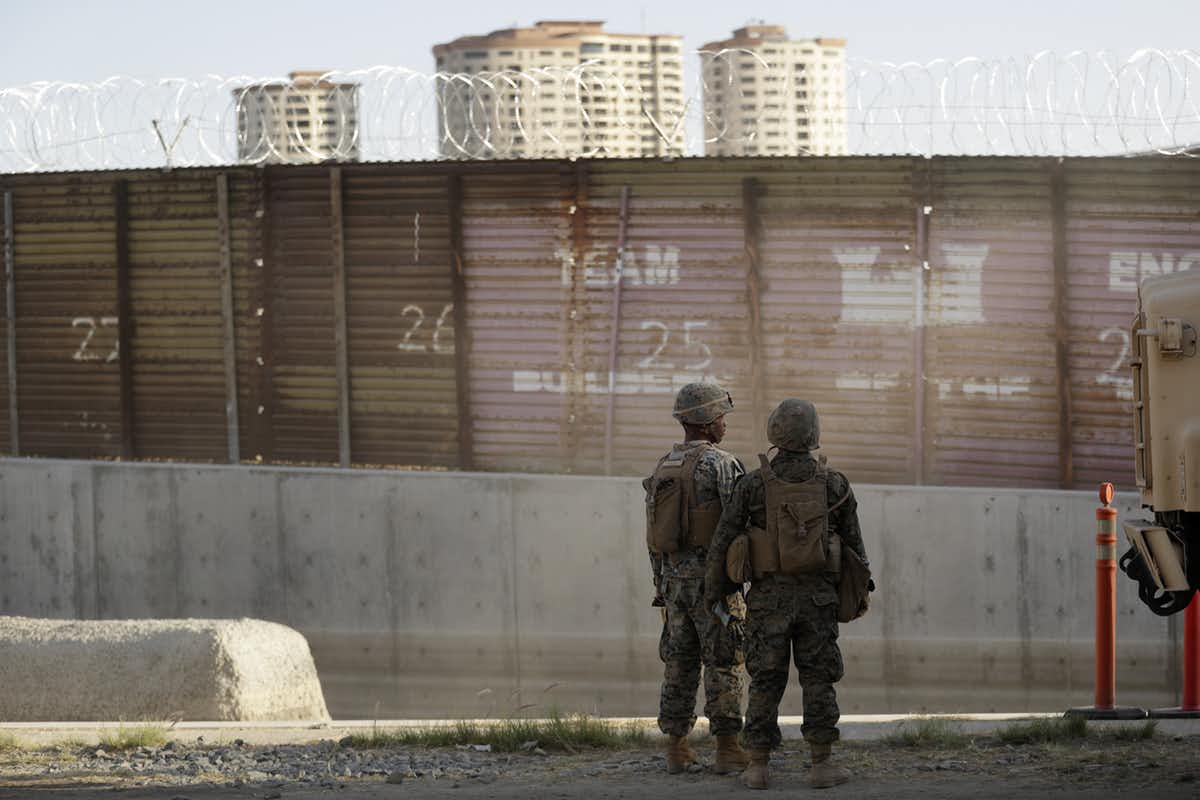

Christian, 22, remains optimistic about reaching the US. (Photo by Francisco Lozano/Latino Rebels)
By Catesby Holmes, The Conversation
For three years, first as a presidential candidate, then as president of the United States, Donald Trump has insisted that the country must stem immigration by building a wall along its southern border—an expensive gambit that few Americans support and that Democratic lawmakers virulently oppose. He even shut down the federal government over this unmet campaign promise.
Now, in a televised address, Trump is expected to declare that the situation at the U.S.-Mexico border constitutes a national emergency. That could give the president sweeping powers to disregard Congress and get the funding to build his wall.
But is there a crisis at the southern border?
Unlawful border crossings have actually declined since 2014, when 569,236 people —most of them Central American— were detained at the southern border, according to U.S. Customs and Border Protection. Last year, 521,090 migrants were caught trying to enter the country unlawfully.
Here, immigration experts explain who’s trying to get into the United States, what they want, and why immigration —even undocumented immigration— actually benefits the United States.
1. Most Central American Migrants Are Asylum-Seekers
Central American migration is heavily driven by fear, according to researcher Jonathan Hiskey of Vanderbilt University.
“An increasing number of individuals are now arriving at the U.S. southwest border because of crime, violence and insecurity in Central America,” he writes.
With 60 murders per 100,000 people in 2017, El Salvador was the deadliest place in the world that was not at war. Almost 4,000 people were killed there in 2017. That year New York City, which has a much larger population, saw 292 killings.
Honduras’ murder rate has plummeted since 2014, but with 42.8 murders per 100,000 people in 2017, it is still one of the world’s most dangerous places.
People who’ve been victims of crime multiple times are most likely to emigrate, Hiskey says. Rather than trying to sneak across the U.S. border, refugees from crime typically surrender at the border and ask for asylum.
2. Central American Teens Face Particular Risk
While overall crime and violence have declined across Central America in recent years, one population is more at risk.
“Youth homicides in the region are now over 20 per 100,000—that’s four times the global average,” says immigration researcher Julio Ernesto Acuna Garcia. “My research in the Northern Triangle shows that homicide rates among people aged 19 or younger have been steadily rising since 2008,” largely due to gang violence, he writes.
Those stunning statistics explain why so many families keep arriving at the U.S.-Mexico border.
3. The Border Is Not a National Security Threat
Trump tends to ignore the fact that most Central American migrants are refugees from violence.
Instead, administration officials falsely claim that immigrants are criminals, or that Middle Eastern terrorists are infiltrating the country’s southern border. This creates the impression that the border is a national security threat.


U.S. Marines look on during work to fortify the border structure that separates Tijuana, Mexico, from San Diego, California. AP Photo/Gregory Bull
This is called the “politics of insecurity,” writes University of Saskatchewan policy researcher Daniel Bélan, and it is a strategy used by populists worldwide. Governments “downplay, inflate, or even fabricate perceived threats to increase their electoral and political support.”
In “creating or exacerbating threats they seek to protect ordinary people against,” populist leaders fabricate a sense of urgency that justifies extreme measures, Bélan says.
4. Immigrants Don’t Cause Crime
Trump and his party used the same scare tactics to rally his base during the 2018 midterm elections.
A quarter of Republican ads that ran during the recent campaign season denounced immigrant violence, according to the Wesleyan Media Project, and advocated for Trump policies like separating immigrant children from their parents and slashing refugee admissions.
The street gang MS-13 played a starring role in many GOP campaign ads, says Anthony Fontes, whose 2018 book examined how Republicans leverage the brutal image of this Salvadoran street gang to serve their political agendas.
“Because its membership is primarily Latino, MS-13 helps Republicans make a crucial link between immigration and violence in voters’ minds,” says Fontes.
That association is factually unfounded.
“Numerous studies show that immigrants actually commit crime at a lower rate than native-born Americans,” Fontes says. “Large cities with substantial immigrant populations have lower crime rates, on average, than those with minimal immigrant populations.”
5. Asylum-Seekers Voluntarily Surrender at the Border
Most of the asylum-seekers at the U.S.-Mexico border today will not be allowed to stay in the country.
Central Americans fleeing gang violence are rarely granted asylum, says Abigail Stepnitz, of the University of California, Berkeley.
Asylum-seekers must demonstrate persecution based on race, nationality, religion, political opinion or social group. Central Americans typically “struggle to fit their experiences into the boxes created by the law,” says Stepnitz.
More than 75 percent of asylum claims filed by Salvadorans, Hondurans and Guatemalans are denied.
6. Immigrants Are Good for the US Economy
Immigrants who enter the country often benefit the United States.
An estimated 11 million undocumented immigrants living in the U.S. have become vital to key U.S. industries, says Mary Jo Dudley, director of the Cornell Farmworker Program at Cornell University.
Undocumented immigrants make up more than half of the nation’s farmworkers and 15 percent of construction laborers.
The rise in border enforcement and immigration raids under the Trump administration has particularly hurt farmers, Dudley says.
“One New York apple grower told us that due to labor shortages and dwindling prices … he plans to let his 100-year-old orchard go, because any investments in production would result in significant economic loss.”![]()
![]()
This article is republished from The Conversation under a Creative Commons license. Read the original article.


